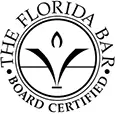Common Trucks on the Road and the Injuries They Can Cause
Trucks are everywhere you go. Every day, truck drivers pick up, transport, and deliver the goods and materials Washington residents need to live their lives. Trucks haul disabled cars and pick up garbage. Workers rely on trucks to perform critical jobs and transport tools, materials, and equipment. Trucks are necessary, but sometimes they present unavoidable hazards. When truck drivers cause traffic accidents, they leave behind serious property damage, injuries, and fatalities. The 2018 statistics from the Washington State Crash Data Portal documents 552 potential truck-accident related injuries and 11 fatalities in King County alone.
A truck’s durability, bulk, and engine size make them useful and powerful. They need these features to meet daily work challenges but they also increase the damages and injuries when a truck is involved in an accident. Small cars have stronger reinforcement structures, seat belts, child safety seats, and airbags. These provide limited protection when a truck driver loses control. As car manufacturers shrink and redesign some car models to generate better gas mileage, there’s little a vehicle owner can do to withstand a damaging truck collision.
Commercial Drivers Are Highly Trained to Meet CDL License Requirements
Every commercial truck operator undergoes rigorous training. Washington State provides a Commercial Driver Guide with the rules and standards each commercial driver must follow. State and local CDL guidelines mirror and enhance Federal Motor Carrier Safety Administration Training standards. Depending on the type of truck a driver chooses to operate, he or she must train and test to comply with specific Commercial Driver’s License categories and driving privileges.
- Class A: May operate “…any combination of vehicles…” with a gross combination weight rating of 26,001 pounds or more, including a towed unit weighing up to 10,000 pounds.
- Class B: Any single vehicle with a 26,001-pound GVWR or any vehicle towing a vehicle with a GVWR under 10,000 pounds.
- Class C: A single or combination of vehicles (not described in Class A or B) used to transport 16 or more passengers or hazardous materials.
Commercial Learner’s Permit operators have additional driving restrictions while they learn to navigate the highways. CDL holders must test and/or demonstrate specific skills to qualify for the following endorsements: T, Double or triple trailer; P, Passenger; N, Tanker; H, Hazardous materials; X, Tank and hazardous endorsement, and S, School Bus.
Common Trucks on the Road
It’s easy to stereotype heavy trucks as long haul “big rigs” with a burly guy behind the wheel. There are plenty of those big rigs are out there, some with male drivers others with savvy lady operators in charge. The driving demographic has changed but the job remains the same. Large trucks deliver the goods and materials consumers and manufacturers need. Trucks transport over 64 percent of the nation’s freight but tractor-trailers are just one of the types of trucks you’ll see on Washington’s roadways.
The Federal Highway Administration assigns categories for non-private passenger vehicles based on weight and class. The agency further classifies them based on light-duty, medium-duty, and heavy. These guidelines describe the common types of trucks you’ll likely encounter each day.
Large Trucks
The U.S. Department of Transportation defines a large truck as a vehicle with a gross vehicle weight rating over 10,000 pounds. When they’re pulling a loaded trailer they often far exceed that total. Tractors are big enough to pull densely-packed single and sometimes double or triple trailers. Powerful engines give them the energy they need to haul large loads. When a crash occurs, a truck’s size and power contribute to heavy damage and catastrophic injuries. The USDOT found several distinctive concerns about large trucks on the road.
- Nationally, large trucks involved in fatal accidents had a GVWR in excess of 26,000 pounds.
- While large trucks comprise only 4 percent of vehicles registered nationally, they’re involved in over 9 percent of fatal accidents.
- 72 percent of those fatally injured in truck accidents were in the other vehicle.
The FMCSA’s Large Truck Causation Study found that one of three critical operator events often preceded large truck-involved accidents.
- Running into another lane or off the road, 32 percent
- Loss of control due to speed, cargo shift, vehicle failure, road conditions, and other issues, 29 percent
- Rear-ending another vehicle, 22 percent
All Large Trucks Are Not the Same
A trucking company changes a truck’s configuration depending on the shipper’s requirements. Sometimes a trucker bobtails, driving only the tractor to pick up a shipper’s load or pre-packed trailer. At other times, a trucker travels deadhead after delivering a load or dropping off a full trailer. Until a truck delivers its cargo, it has a physical and legal connection to the shipper or freight owner. The trucker, shipper, or freight owner reconfigures the truck with the trailer or equipment that meets its current requirements.
Cattle carriers: A cattle carrier is essentially a trailer-sized cage that’s permanently mounted on a chassis. When a trucker connects it to his tractor for delivery, accidents sometimes occur along the way. An accident on February 6, 2019. on Highway 12, near Pasco, WA is just one example. A trucker hauling cattle swerved to avoid a stalled vehicle on the snow-slicked pavement. The truck and carrier went over an embankment, narrowly escaping a first-hand encounter with the Snake River. Some truckers carry cattle in stake body trucks. It’s basically a flatbed with a fence-like perimeter enclosure. They also use stake body trailers and trucks to haul goods and materials.
Flatbeds: Shippers use flatbed trucks and trailers to transport logs, vehicles, construction materials, construction equipment, and other heavy goods. They also use Lowboy, extendable, gooseneck, and other flatbed trailers for specialty cargo. When a flatbed load shifts or the driver loses control, improper load securement is often a factor.
U.S. Transportation codes §393.100 through §393.136 contain guidelines for proper load securement which helps minimize the risk of flatbed accidents. Like other tractor-trailer incidents, Washington has its share of flatbed crashes.
- On April 16, 2019, a flatbed truck rear-ended a tractor-trailer on I-82 near Kennewick. An emergency crew had to free the flatbed driver from his cab.
- In an accident on July 4, 2019, a flatbed driver lost control on I-90 near Medical Lake. The truck overturned and burned. The driver was uninjured and no other vehicles were involved.
- In a June 18, 2019 accident, a flatbed hauling a backhoe flipped over and injured a 71-year old man using a walker.
Tankers: Tankers can be self-contained or designed as trailers to function with a tractor. Manufacturers design tankers to carry fuel, gas, chemicals, or hazardous substances, and sometimes dry goods. Food grade tanks carry milk, water, and other liquids. Tanker accidents occur occasionally, such as the one in which a tanker carrying oil overturned on I-5 in Centralia.
Dump Trucks
With ongoing construction projects transforming Seattle, it’s normal to see an occasional dump truck passing through the city. Dump trucks, cement mixers, refrigerated trucks, and other service equipment are Class 8 vehicles. They often weigh in at 33,001 pounds or more. When they’re in an accident, their weight contributes to serious damage and injuries.
- On May 23, 2019, a pickup driver sustained fatal injuries after an accident with a dump truck near Brinnon. The dump truck overturned spilling a non-hazardous load.
- On June 4, 2019, a motorcyclist died when a dump truck crossed into his lane on I-395 near Kettle Falls.
- On July 22, 2019, a dump truck fatally injured a pedestrian in a Bellingham construction zone.
Garbage and Recycling Trucks
Garbage trucks travel throughout commercial and residential neighborhoods providing essential solid waste removal services. On service routes, they move slowly and make frequent stops, usually seeming heavy and oversized yet harmless. As Class 7 vehicles, garbage trucks fall within a 26,000 to 33,000-pound range GVWR. Recent accidents demonstrate how a garbage truck’s combined engine power, speed potential, and weight often causes serious damages and injuries.
- A garbage truck struck and killed a pedestrian on June 30, 2019, on SR 166 in Port Orchard.
- On January 23, 2019, a woman sustained fatal injuries when she crashed into a garbage truck on SR 12 in Morton.
- A 51-year-old bicyclist died from injuries sustained in a collision on July 4, 2018, in Auburn.
Delivery and Service Trucks
Delivery trucks, step vans, and walk-in vans are light and medium-duty trucks weighing between 10,000 and 19,500 pounds. Accidents are not often as serious as crashes involving larger trucks, but they still cause significant damage and injuries. Delivery truck drivers often display risky driving behaviors in their effort to meet delivery commitments and deadlines.
- On June 12, 2019, a FedEx semi delivery truck rolled over on I-5 near Olympia. Fortunately, the truck didn’t injure anyone but it scattered packages across the highway and caused a major traffic jam.
- A FedEx driver sustained serious injuries on June 22, 2019, in Benton County. He was thrown from his vehicle as it left the roadway and came to a stop after rolling.
- On January 9, 2019, a UPS truck collided with a disabled woman on a scooter causing fatal injuries. The accident occurred on a sidewalk in front of an Auburn business.
Rental Trucks
When you see a person loading up a rental truck, you probably don’t think about their driver’s license or training. You never consider any of the qualifications to which local and federal standards hold all commercial truck drivers. When anyone requires a rental truck, they need only meet age and basic licensing requirements. Then they put down a credit card deposit and drive away in a heavy truck. No Commercial Driver’s License required!
Rental agencies like UHaul lease a range of trucks. While some are as small as a delivery van, a licensed driver can lease a 10-foot truck with a 5,790 empty weight or a 26-foot, 12,990-pound truck with a gross vehicle weight capacity up to 25,999 pounds. When you consider the idea of putting a driver with no trucking experience behind the wheel of a heavy truck, it’s easy to recognize the potential for danger.
Lack of safety precautions is another rental truck issue. A 2017 report to Congress, Rental Truck “Safety Recall Remedy Report,” found that only four out of six rental vehicle companies had a plan for removing recalled vehicles from their rental fleets. They typically rented or sold recalled vehicles without notifying the consumer.
Pickup Trucks
Pickup trucks are the private passenger vehicle of choice for many Americans. They’re so common, it’s easy to forget that they also perform a dual role as work trucks. Depending on a pick-ups size, weight, and function, it’s subject to an official US Transportation Code designation as a non-passenger automobile, §523.5; a heavy-duty vehicle, §523.6; or a heavy-duty work truck, §523.7. Regardless of its use, a pick-up falls within the heavy-duty category once its gross vehicle weight rating reaches 8,501 pounds to 14,000 pounds and over.
Pick up trucks are multi-use vehicles found in many driving situations right alongside smaller private passenger vehicles. Because many pick-ups are bigger and heavier than an average small car, they cause significant damage when they’re involved in a crash. Here are a few examples.
- On July 22, 2019, a speeding pickup truck caused a six-car pileup in Everett, Washington. Eight people were seriously injured and hospitalized for treatment.
- On June 13, 2019, a pick-up driver lost control while hauling a boat. He struck a Bellevue bus shelter, trapping a woman in the rubble. The woman sustained injuries to her face, legs, and hands.
- A motorcyclist sustained fatal injuries after a pick-up truck struck his motorcycle on Northeast 35th St. in Seattle. The accident occurred on June 16, 2019.
Trucks Are Everywhere
Wherever you go, you encounter tow trucks, furniture delivery trucks, refrigerated trucks, landscaping trucks, and many other truck types. It’s impossible to avoid them and the hazards they create. Truck crash scenarios are often complex with serious injuries. Each truck accident comes with a unique set of legal and liability issues. The responsible parties often include not only a truck driver but also an employer, truck or trailer owner, shipper, and loader.
If you or a family member have been injured in a truck accident, consult a Seattle truck accident lawyer; an attorney can help you better understand the necessary steps for preserving your legal rights and protecting your future.
Free Consultation
We Are Here For You 24/7
Reviews
– Elissa M.
“Really pleased with Boohoff Law! Received immediate responses when I had any questions. Treated amazingly by all staff … made this process a true breeze!”
– Caitlyn M.
– Brandy K.
Related Posts
I Was Partially At-Fault in a Rear-End Crash. Can I Still Get Compensation in Florida?
I Was a Passenger in an Uber Accident. What Are My Rights?
What Damages Can I Recover After a Jackknife Truck Accident?
Recovery is personal.
We’re here for you.
We’re close by. And if you can’t make it to us, we’ll meet you where you need us, at home or in the hospital.
You're better off with Boohoff.











The information on this website is for general information purposes only. Nothing on this site should be taken as legal advice for any individual case or situation. This information is not intended to create, and receipt or viewing does not constitute, an attorney-client relationship.
Disclaimer: The results and testimonials presented on this website are based on the unique facts and circumstances of each case. Past results do not guarantee or predict similar outcomes in future cases. Every legal matter is different, and you should not rely on prior case results as an expectation of future performance.
available 24/7
(877) 999-9999
